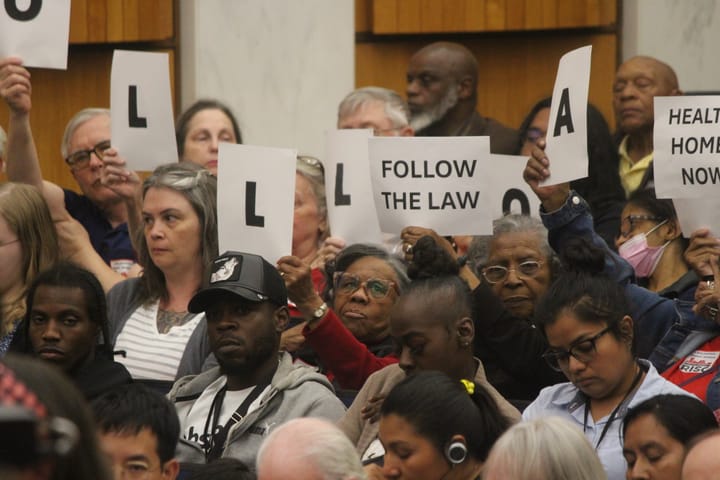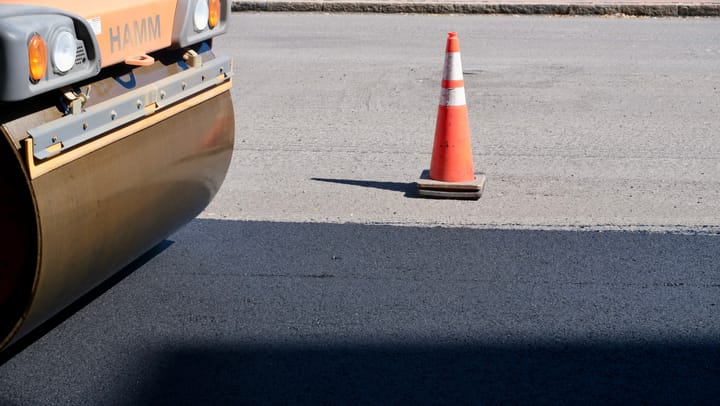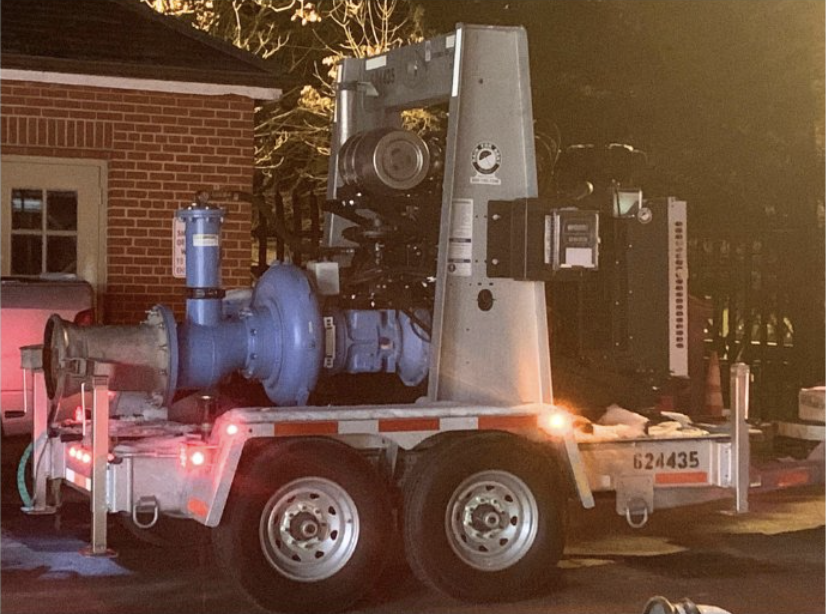What is 'tactical urbanism'? The city hopes it's an answer for a crash-prone intersection.
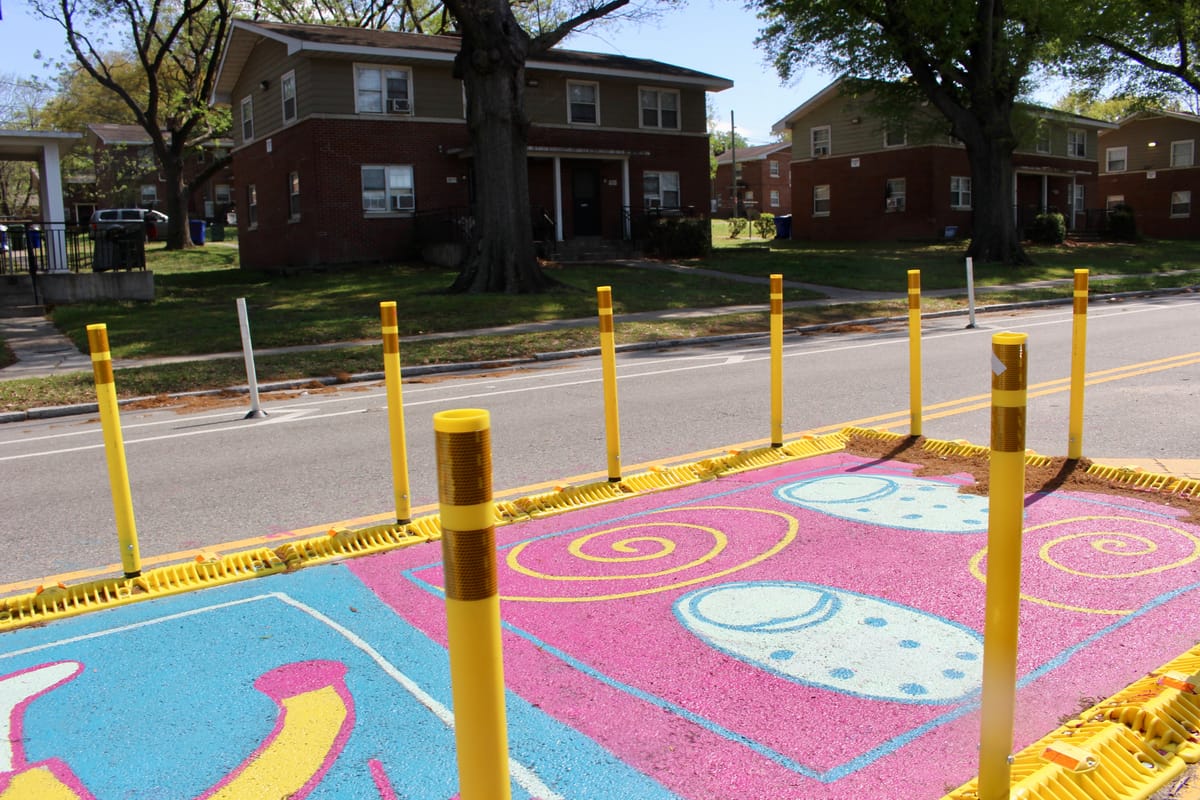
The intersection of Laburnum Avenue and Hermitage Road is about to get a lot more colorful — and a lot slower.
The crossroads has long been a troublesome spot for traffic planners. For years, a statue of Confederate Gen. A.P. Hill planted in the middle of the intersection obscured drivers’ views. The marker, and Hill’s remains buried beneath it, was removed in 2022, but the intersection remained one of the city’s most crash-prone.
Making the situation even more worrisome is the presence of Linwood Holton Elementary at the junction’s northwestern corner. Traffic cameras that monitor drivers during the hours surrounding the school’s start and release times have captured thousands of cases of speeding exactly when students are most likely to be out and about.
While a permanent solution could cost millions, Richmond’s Department of Public Works in the meantime is experimenting with a different approach through its Lighter, Quicker, Cheaper program: temporarily erecting plastic posts to narrow the roads’ corners and having students paint murals within the now-reclaimed portions of the streets.
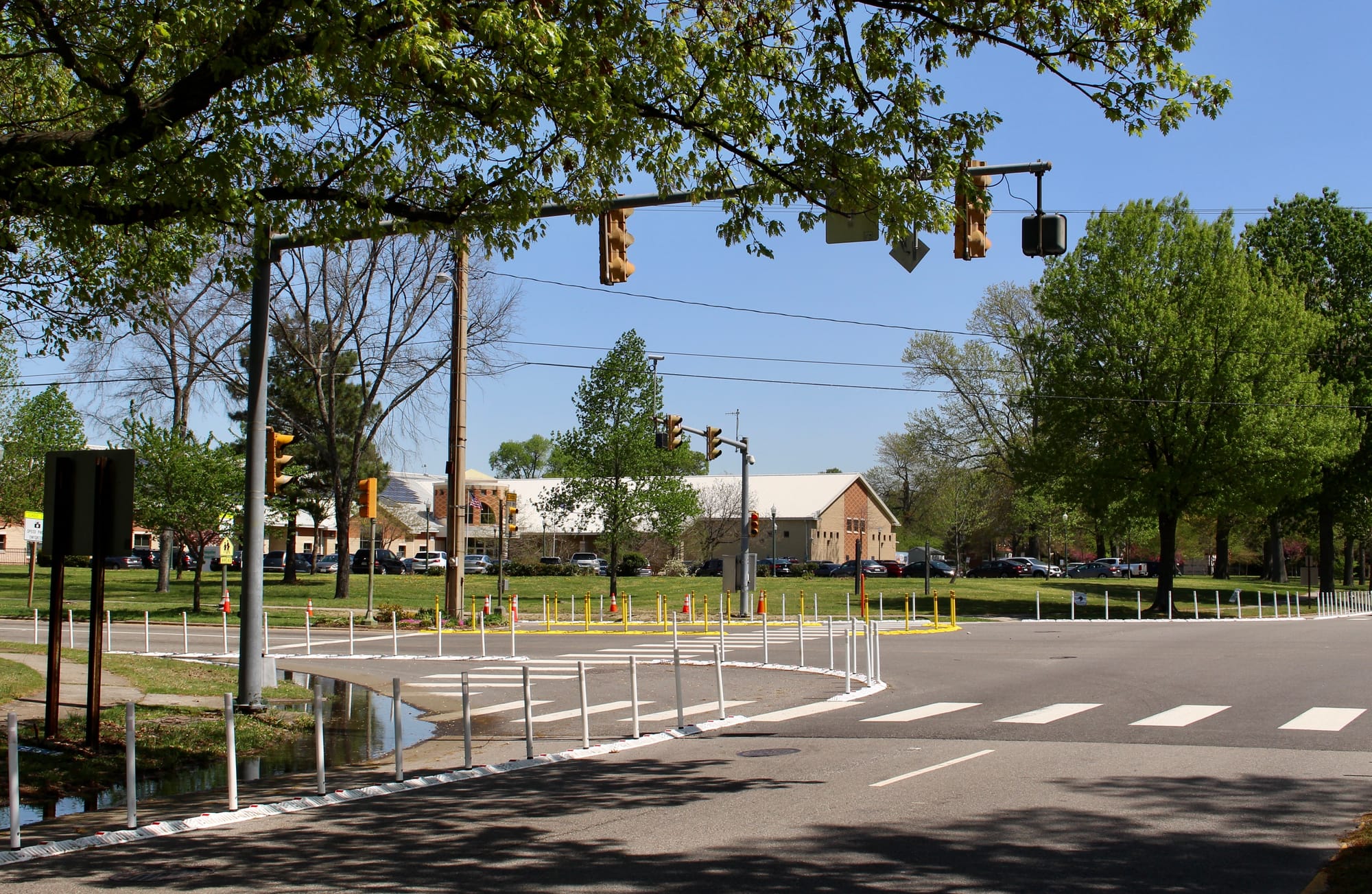
The posts are already up, but the murals are still to come. At Holton, those images — which have been combined under the guidance of Sam ‘Skrimpz’ Prather, the city’s first-ever tactical urbanism artist — will include self-portraits, flying cars, a dragon bursting from an egg and shooting laser beams, pizza riding a skateboard, someone singing and people holding hands in a circle.
The intersection “has very large radii right now, so you can really fly around the corner,” said Planning Director Kevin Vonck at an April 1 meeting where the project was presented to the Richmond Planning Commission. “So by making that radii smaller, you have to make a slower turn.”
What is a tactical urbanism artist?
Tactical urbanism is a concept that emerged over the past decade and a half to describe citizen-led projects that use low-cost, temporary solutions outside of government frameworks to fix pressing problems in the community. Richmond’s Lighter, Quicker, Cheaper program is an attempt by the city to harness that approach, and officials decided public art would be a component of the first round of projects under its umbrella.
The tactical urbanism artist was hired after officials concluded “an artist would be needed to coordinate the vision for community art and translate that into appropriate for asphalt applications,” said a DPW spokeswoman in an email. Skrimpz was chosen because he is “a local artist who also had a passion for, and experience with, working with local youth and community.”
Office of Equitable Transit and Mobility Director Dironna Moore Clarke said the project “plays a couple of roles in trying to integrate the community in creating the culture change” that’s needed among drivers.
“When people say, ‘Hey, what is all that?’ the student or the parent says, ‘Hey, we worked on that, and this is to slow you down when you come through the neighborhood,’” she said.
The Holton project marks the second site where OETM is trying out the mural and flexible post combination. Over spring break, Richmond Public Schools students painted murals within traffic-calming infrastructure on Mosby Street and Mechanicsville Turnpike outside Martin Luther King Jr. Middle School. Another similar project is expected to launch at Richmond High School for the Arts later this month, with installation of the murals this summer.
Three guest artists — Lizzie Brown, Jonathan Ashe and Jordan James — have also been commissioned to produce artwork for other Lighter, Quicker, Cheaper intersection projects.
While a spokesperson for the Department of Public Works acknowledged “the jury is still out” on whether the murals themselves help slow down traffic or whether it’s the traffic calming infrastructure that’s doing most of the heavy lifting, some early research has shown promising results.
One recent study by Bloomberg Philanthropies that looked at crash rates and motorist and pedestrian behavior before and after the installation of “asphalt art,” a term used to describe the combination of public art and traffic improvements, found “significantly improved safety performance across a variety of measures.”
Right now, Public Works is “planning murals in conjunction with other more ‘proven’ traffic calming measures such as the curb extensions created with flex posts,” the DPW spokeswoman wrote in an email. “The idea is that the murals’ catch drivers’ eye, bringing their attention back to their surroundings and making them more aware that they are entering a pedestrian-oriented space.”
At the same time, the department says the murals meet other goals of increasing public art and getting communities involved in street projects.
Through the murals, students are “laying claim to a space that they live in and getting to make a mark upon it,” said Skrimpz.
Contact Reporter Sarah Vogelsong at svogelsong@richmonder.org



